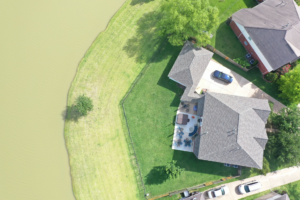Houston Roof Installation
Choose the best New Roof Installation company Houston homeowner’s and businesses have trusted for years.
Take the first important step to protect the investment you’ve made in your home with a new roof by calling our helpful customer service team. A member of the team is ready to answer questions you have about the roof installation process, and we’ll make it easy, smooth and timely. We’ll set up a convenient appointment for a roofing installation professional to meet you on site and compete a free inspection and consultation. We will show you a selection of modern roofing material choices, styles, designs and colors to give your home or business a special touch and great look. And once we begin, our roofing installation technicians will keep your project on schedule.
Enjoy the confidence and convenience of choosing to expertly install your roof.
We truly believe in fine craftsmanship and superior customer service from start to finish. With our skilled team, your property will be crowned with a sharp-looking, well-crafted roof that will protect it from the elements and increase its property value.
Installing a new roof is a complex and labor-intensive process that should ideally be done by experienced roofing professionals. However, if you have the necessary skills, equipment, and are confident in your abilities, here are the general steps involved in installing a new roof:
1. Safety Precautions:
- Prioritize safety by wearing appropriate gear, including a helmet, safety harness, non-slip footwear, and gloves. Ensure that the roof is dry and not slippery.
2. Roof Inspection and Preparation:
- Assess the condition of the existing roof and make any necessary repairs or replacements to the underlying structure, such as damaged plywood or sheathing. Ensure that the roof deck is in good shape before proceeding.
3. Material Selection:
- Choose the roofing materials that best suit your needs, climate, and budget. Common roofing materials include asphalt shingles, metal, wood shakes, and tiles.
4. Tear Off the Old Roof (if necessary):
- In some cases, the old roofing material may need to be completely removed before installing a new roof. This step involves stripping away old shingles, underlayment, and nails.
5. Install Underlayment:
- Roll out and secure a layer of roofing underlayment (felt paper or synthetic material) over the roof deck. This serves as a moisture barrier and protects the roof deck from water infiltration.
6. Flashing Installation:
- Install flashing around roof penetrations such as chimneys, vents, and skylights. Proper flashing prevents water from seeping into vulnerable areas.
7. Starter Shingles:
- Begin installing starter shingles at the eaves of the roof. These shingles provide a secure edge and help prevent wind uplift.
8. Main Roofing Material Installation:
- Lay the main roofing material (shingles, tiles, metal panels, etc.) in rows, starting from the bottom and working your way up the roof. Follow manufacturer guidelines for installation, including nailing or fastening methods.
9. Ventilation and Ridge Cap:
- Ensure proper roof ventilation by installing ridge vents or other ventilation systems. At the roof’s peak, install ridge caps to cover the ridge and provide additional protection against weather elements.
10. Edge Trim and Drip Edge: – Install edge trim and drip edge along the roof’s perimeter. These components help channel water away from the roof’s edges and provide a finished look.
11. Valley Flashing: – In areas where two roof planes meet, such as valleys, install metal or roofing material designed for valleys. Proper flashing in these areas is crucial to prevent water infiltration.
12. Cleanup and Inspection: – Clean up debris and inspect the entire roof to ensure that all materials are correctly installed. Check for loose or missing fasteners and make any necessary adjustments.
13. Final Inspection: – Once the installation is complete, have a professional roofing inspector or contractor conduct a final inspection to ensure the roof meets local building codes and standards.
14. Warranty and Maintenance: – If your roofing material comes with a warranty, make sure to register it. Additionally, schedule regular roof inspections and maintenance to extend the lifespan of your new roof.
Please note that the specific steps and details can vary depending on the type of roofing material, the design of your roof, and local building codes. Roofing projects can be hazardous, and it’s often recommended to hire a licensed roofing contractor with experience to ensure the job is done safely and correctly.






